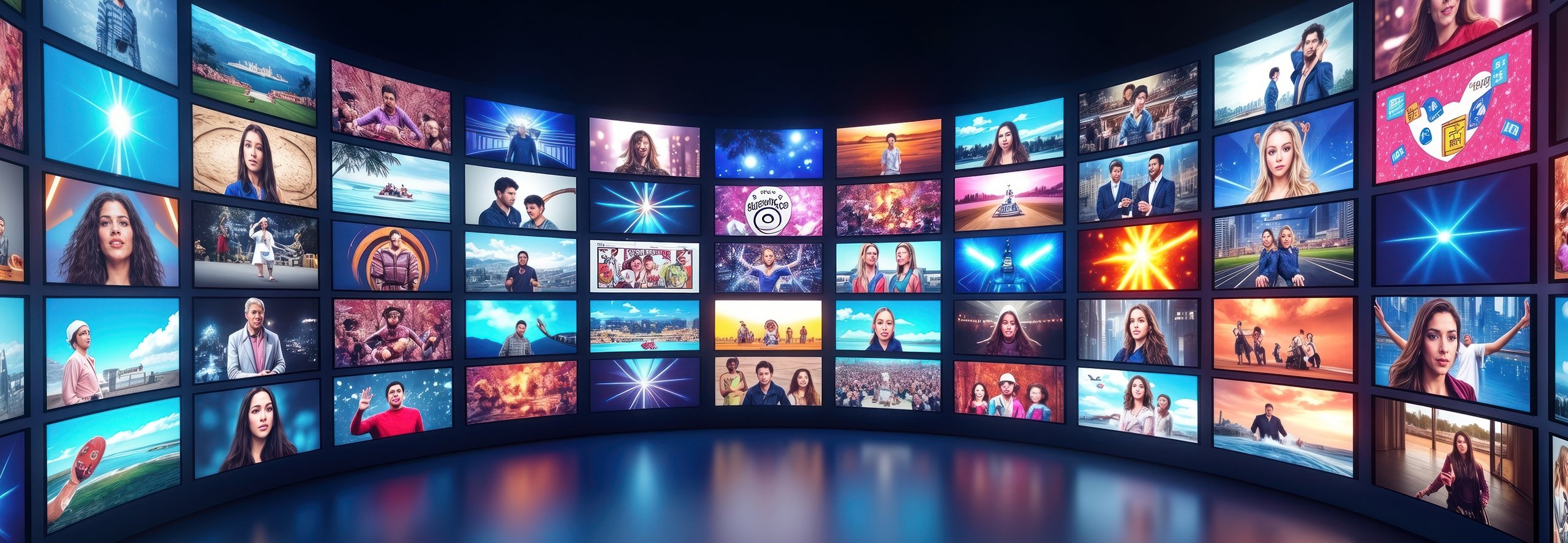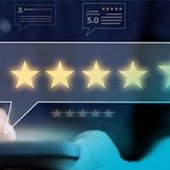We think you’ll love this! Hyper-personalization supercharges CX in the age of AI

IN BRIEF
- Did you know Netflix recommendations change based on where you are, when you are watching and on which device? I didn’t.
- Hyper-personalization improves customer satisfaction by making product and user discovery effortless, intuitive and engaging.
- Human-centricity is the key to unlocking innovation and purpose, and even though AI will surely disrupt design, eliminating, transforming and creating jobs, it will be for the best.
Like 260 million of you, I have a Netflix account. I like to tell people of a certain age that mine began back in the ’90s when Netflix would mail you DVDs, and you would mail them back. At least that was the plan.
A few years ago, I found one of those old Netflix envelopes in a box I never fully unpacked when we moved into our house back in 2001. Inside, there were three DVDs: Shrek, Ocean’s Eleven and Memento. (Do I have good taste in movies or what?)
This provided everyone with a funny story and a few laughs, and I figured the Netflix police had long since given up on trying to track me down.
I bring up Netflix 1.0 not to revisit the nostalgia of the ’90s — at that point in time, no one, maybe not even Netflix, was dreaming of streaming. Rather, I bring it up to talk about how a huge part of its customer experience today is hyper-focused on hyper-personalization. And Netflix, it turns out, is exceptionally good at it.
A certain place and time
Most people are aware Netflix will make content recommendations based on a user’s ratings, search history and previous selections. In fact, Netflix says more than three-quarters of everything subscribers watch on the streaming service comes from its algorithm. But did you also know that those recommendations change based on where you are, when you are watching and on which device? I didn’t.
But after I read about its AI-powered recommendation algorithm that predicts not only what I want to watch, but where and when, I started paying closer attention to what Netflix recommended to me. Here’s what I noticed:
On Saturday mornings, I will often be on Netflix searching for shorter content, maybe a sit-com, lighthearted series, or perhaps a music documentary to watch on my phone while I pedal away on an exercise bike for an hour or so.
On Saturday nights, I will often be on Netflix searching for longer content, maybe a movie, drama series or perhaps a true-crime documentary to watch on my living room smart TV with my wife for a few hours or so.
Netflix knows the difference. It has hyper-personalized my viewing experience. Netflix uses temporal factors and predictive modeling, and it collects data about my viewing behavior and habits, even highlighting content with certain character arcs, storylines or settings. Give it data and it gives you what you want, even if you don’t know it yet.
Netflix understands the many moods of me better than I do. It “understands” the differences between Saturday Morning Joe and Saturday Night Joe. Could Grumpy Joe, Happy Joe or Anxious Joe be far behind? The possibilities are mindboggling.
Supercharging CX
I am not sure why I find this so surprising. Personalization has become ubiquitous; we barely even notice when Amazon’s algorithms offer products based on previous purchases, or we see Disney ads after talking about kids and needing a vacation.
It makes perfect sense: hyper-personalization improves customer satisfaction by making product and user discovery effortless, intuitive and engaging. And brands understand every interaction is an opportunity to fulfill an unmet customer need or build upon a trusted relationship. But my realization about Netflix feels different; it feels like a big step in supercharging CX in the age of AI algorithms. Considering the pace of change, one can only imagine where all this hyper-personalization and predictive modeling end up, and the ultimate impact on the customer experience.
With all that in mind, VISION by Protiviti explores The Customer Experience, examining how companies can create and deliver exceptional experiences that offer excitement, build trust and loyalty with customers, and unlock revenue growth.
In July, we will publish our Protiviti-Oxford global Executive Outlook on the Customer Experience, which will probe into companies’ CX strengths and weaknesses, resources and readiness and measure the impact of AI and other emerging technologies.
‘A hyperfocus on customers builds trust’
As part of our editorial exploration, VISION by Protiviti reached out to experts to discuss the future of the customer experience in this rapidly changing business environment. Despite all the current uncertainties, “it’s a great time to be a marketer,” says Jim Stengel, former Global Marketing Officer at Proctor & Gamble and host of The CMO podcast with Jim Stengel. Stengel sat down with Jen Friese, Protiviti Managing Director and Global Lead of Digital Solutions, to talk about how having a hyperfocus on consumers is the best way to build brand trust and customer loyalty in these tough times.
‘AI will surely disrupt design’
Meanwhile, Mauro Porcini, President and Chief Design Officer at Samsung, says human centricity is the key to unlocking innovation and purpose, and even though AI will surely disrupt design, eliminating, transforming and creating jobs, it will be for the best. AI’s ability to decrease or even do away with meaningless work and menial tasks will free us up for more quality time for the things we enjoy. “It’s a dream,” Porcini says. “Ultimately, AI can do the most human thing of all, give us back the happiness we’ve lost over time. Porcini sat down with Alex Weishaupl, Protiviti Managing Director, Digital Experience, to talk about these things.
‘Merge automation with human overview’
We also feature Barsali Bhattacharyya with The Economist Intelligence Unit who talks global market trends and customer expectations with Protiviti Managing Director Bryan Comite. As CX moves further into digital domains, Bhattacharyya says we may eventually end up through the looking glass where the future reflects the past.
An automated consumer experience via bots and virtual assistants may be fine… until something goes wrong. “Businesses that are able to merge automation with human overview will be the winners,” she says. The ease and speed at which a consumer can reach a human anywhere along the CX journey will be crucial to future success.
While more humanity sounds great, I don’t see us going back to the days of dropping DVDs into a mailbox. Would you believe Netflix subscribers were still able to do that just two years ago? Netflix finally ended the practice in late 2023, and said subscribers could keep any DVDs they currently have. Whew! Forgetful Joe is relieved.
Anyone still have a DVD player?













